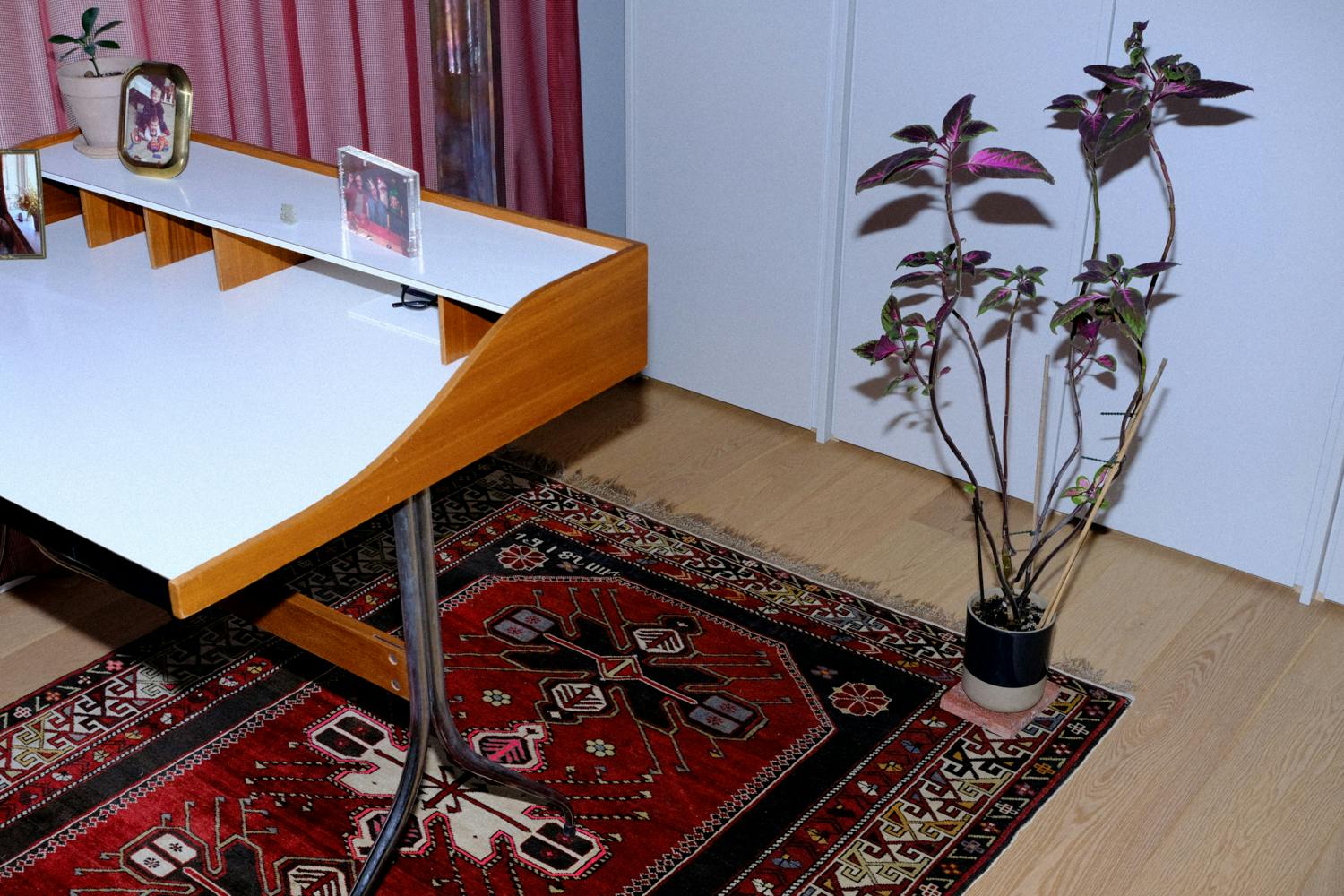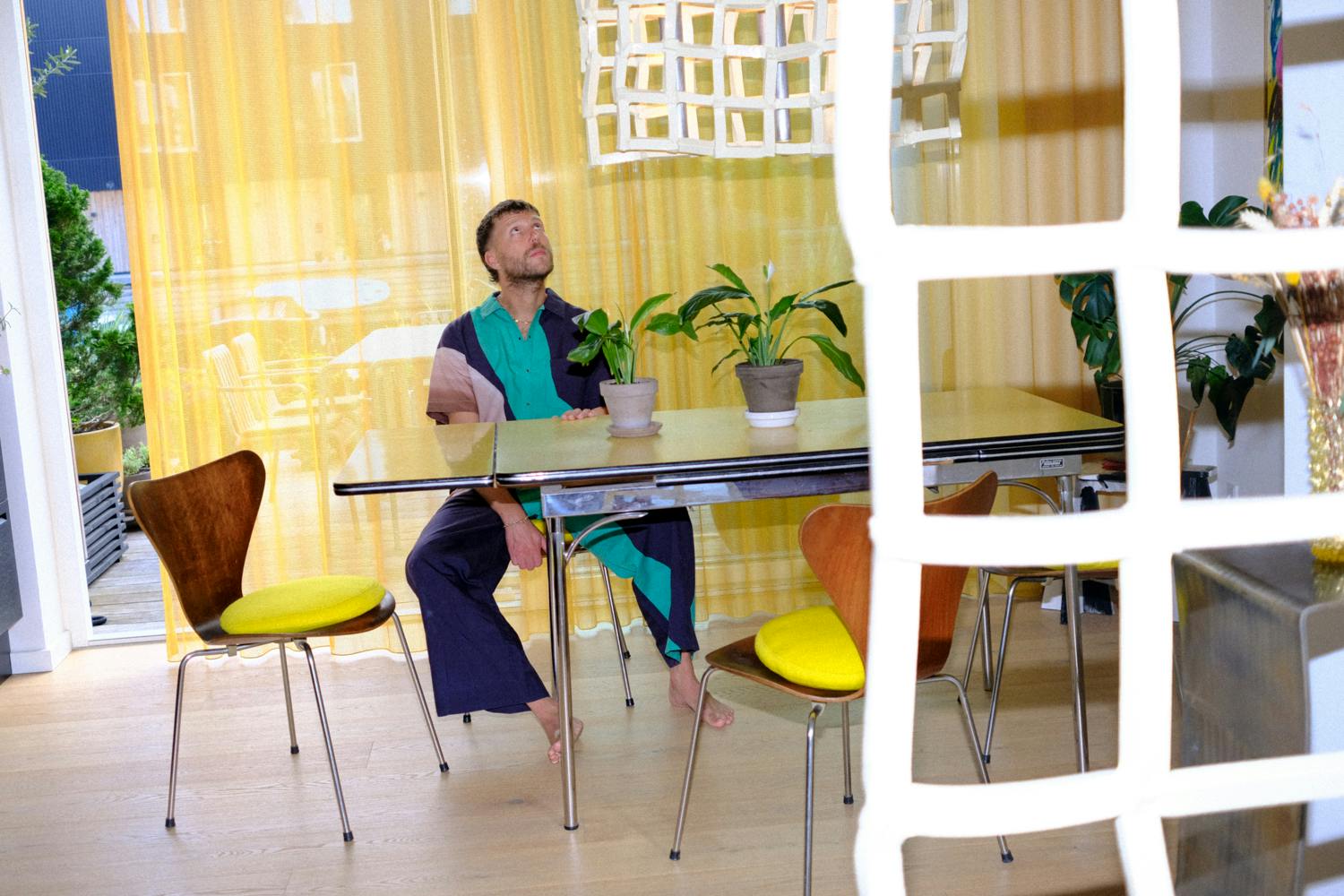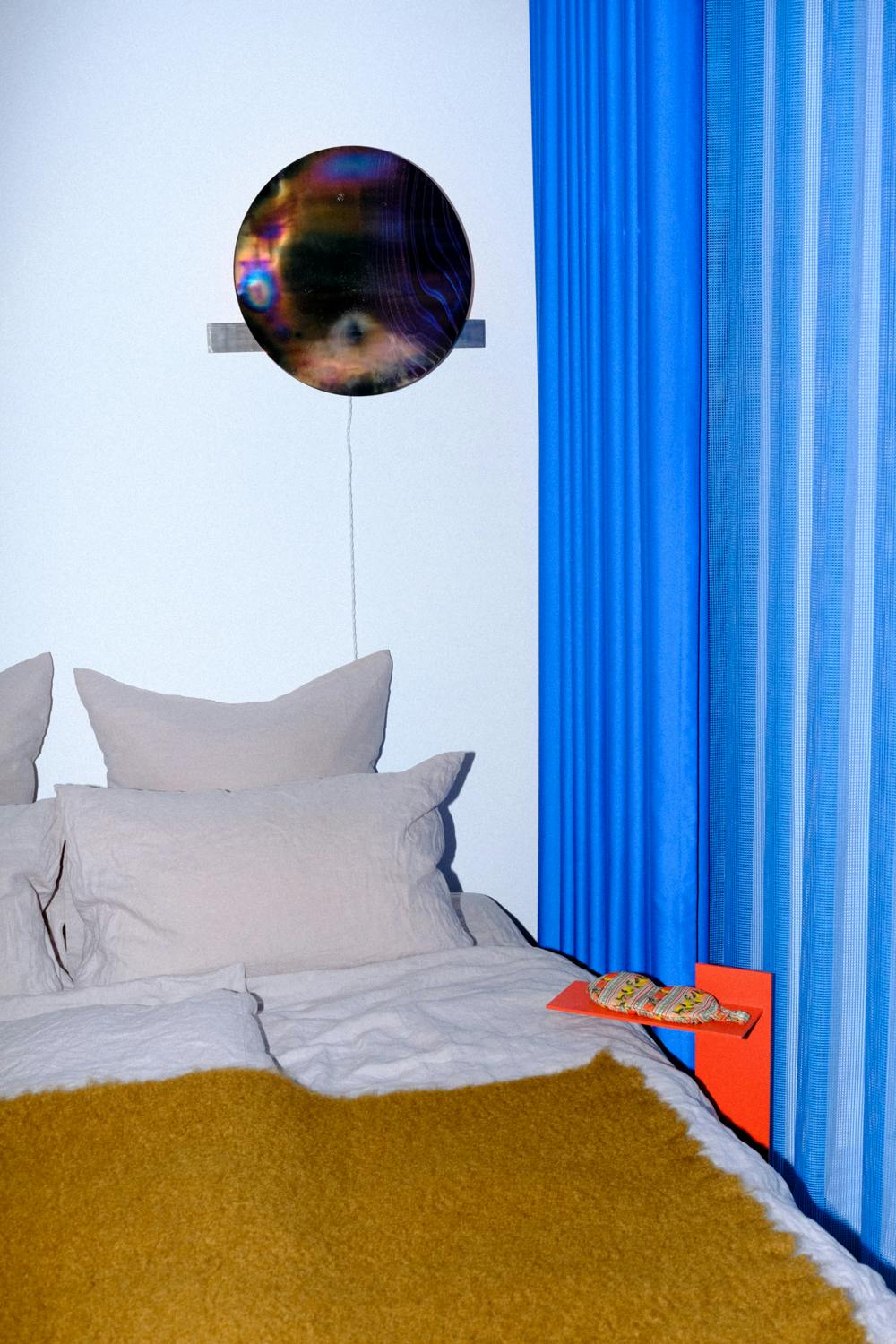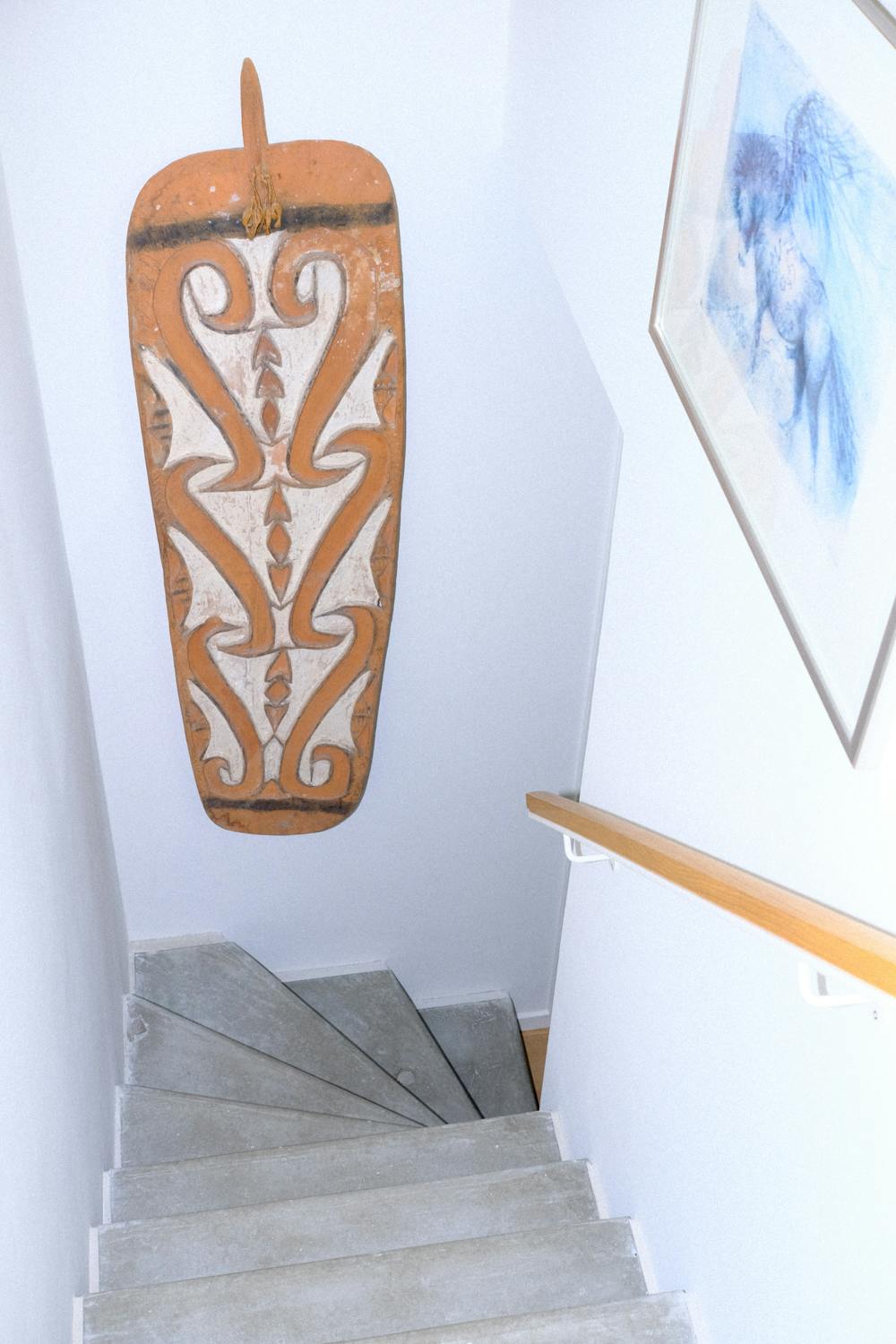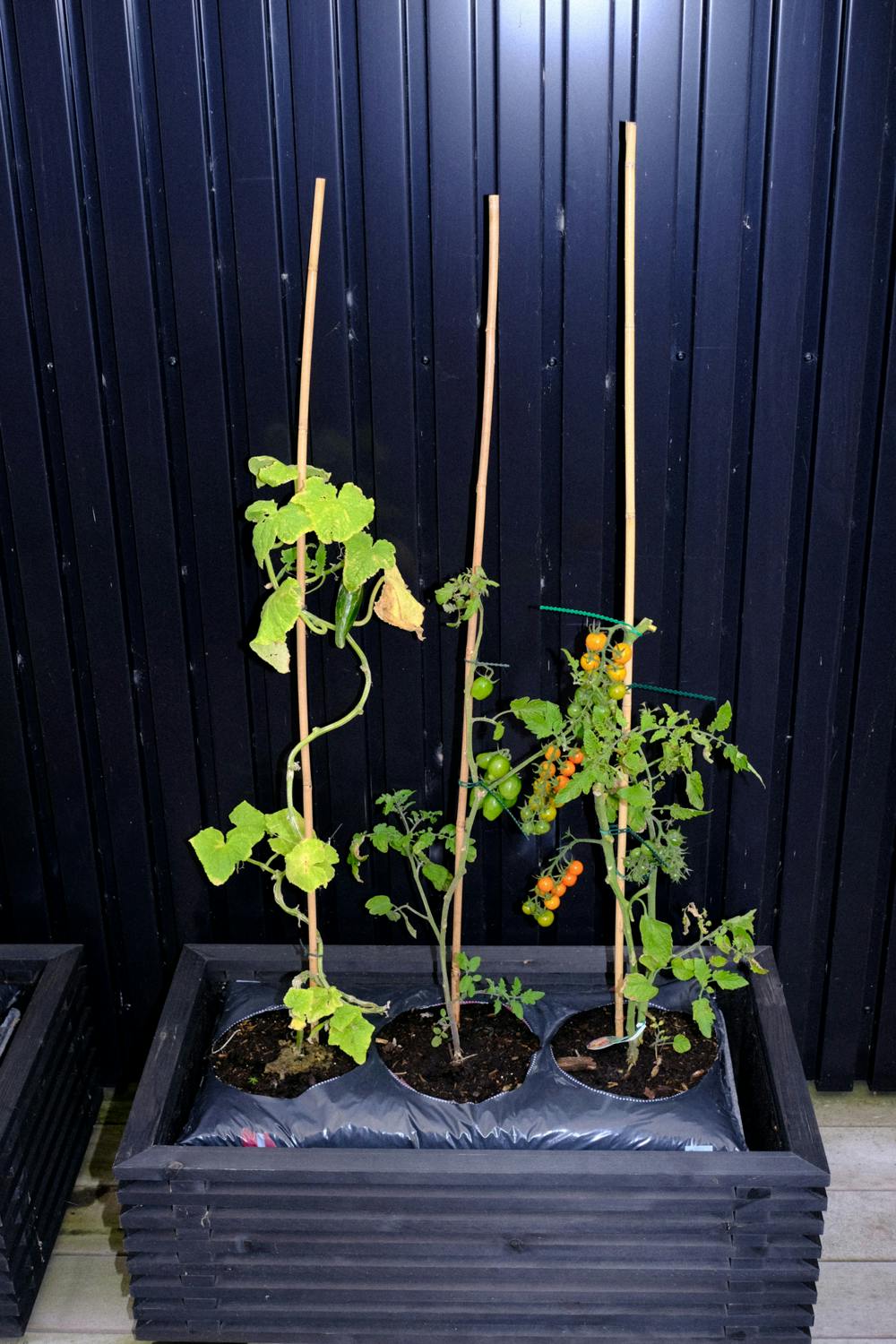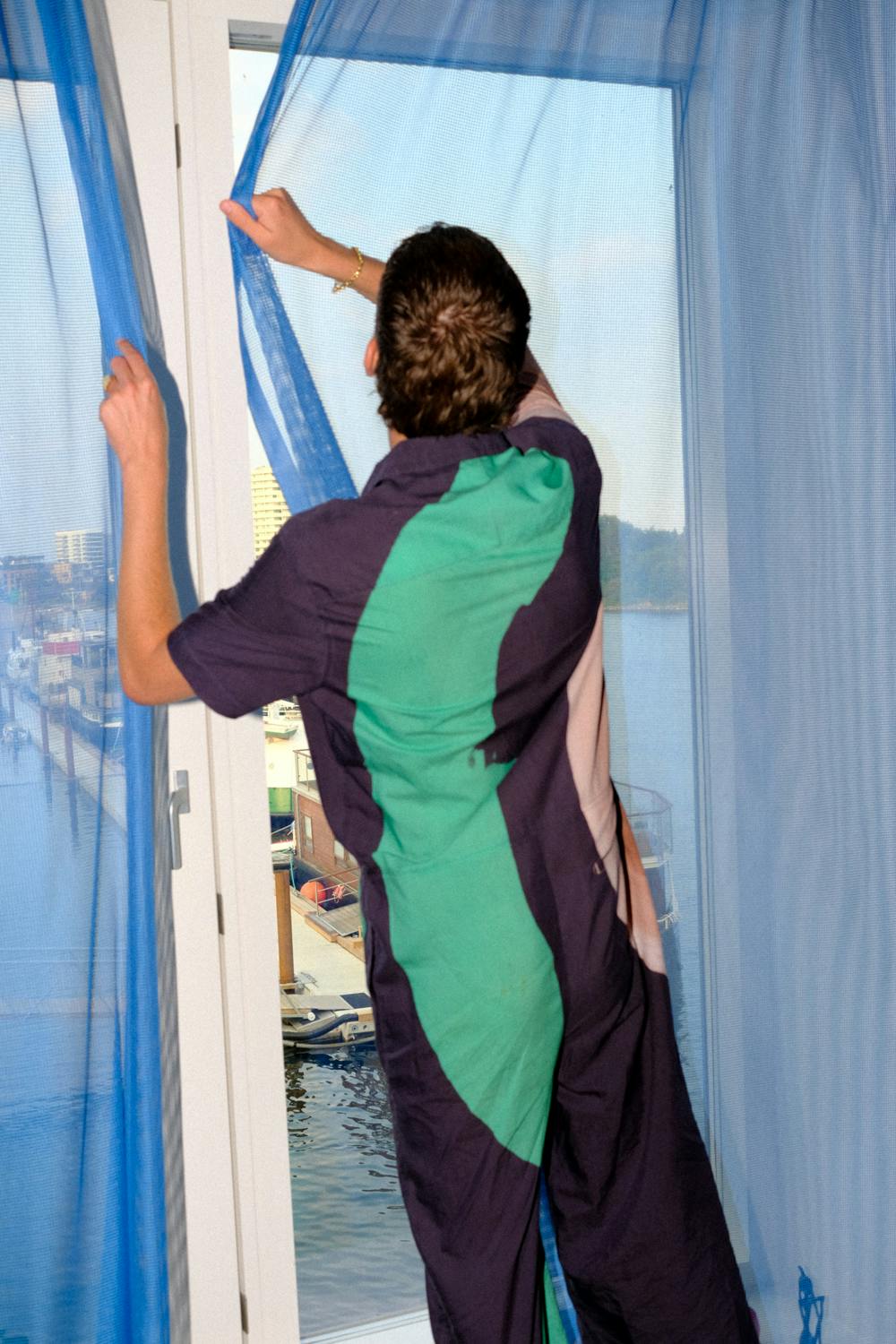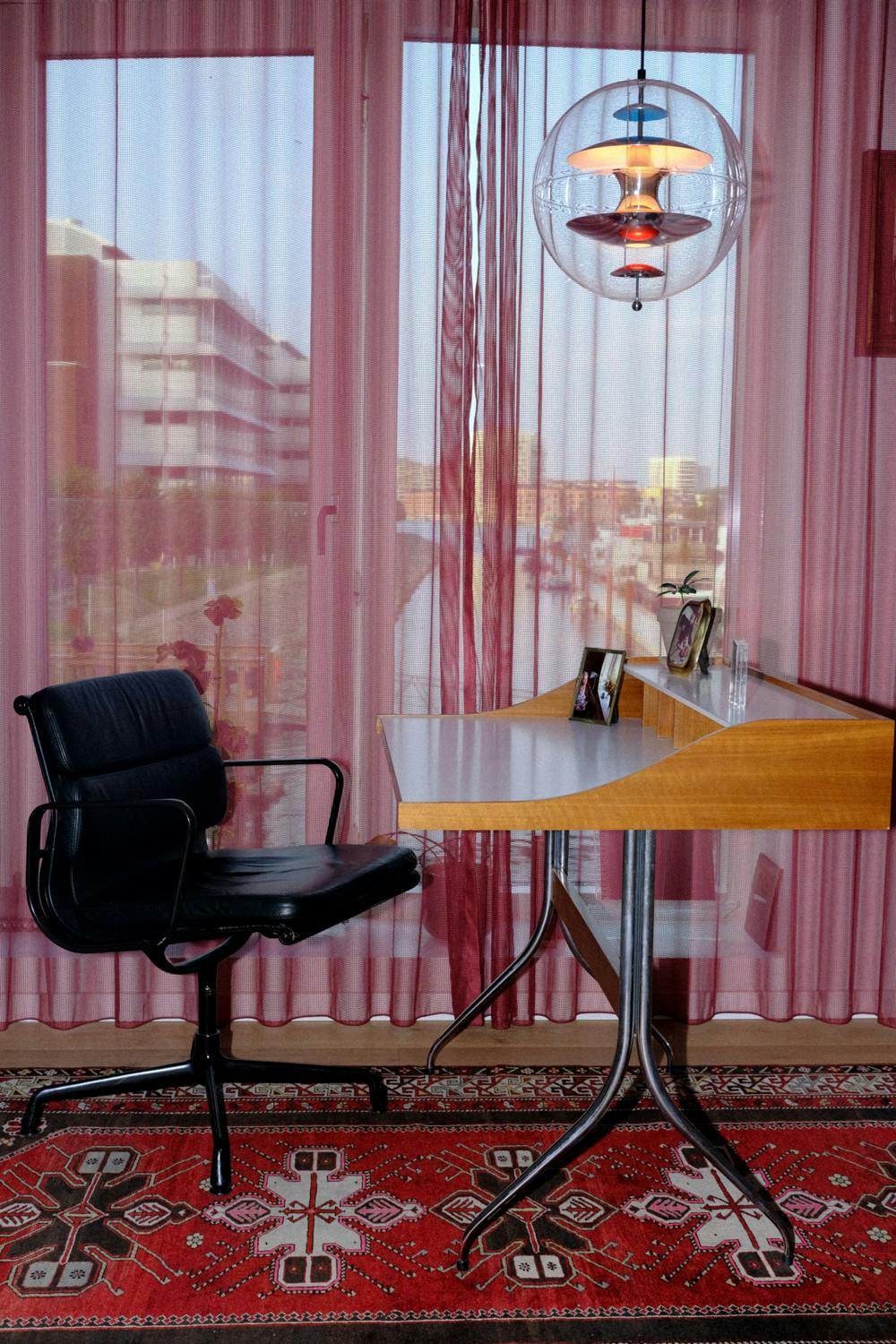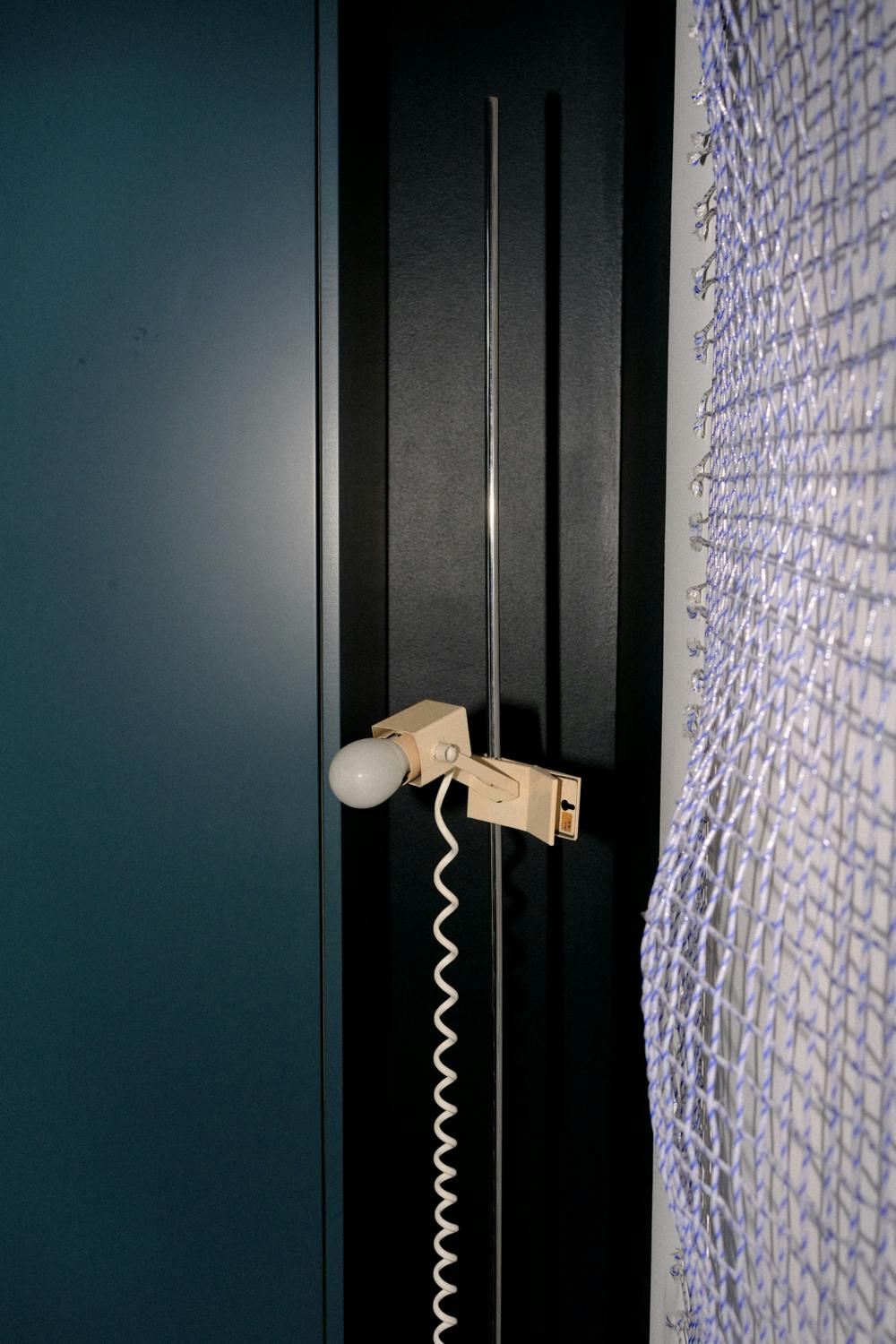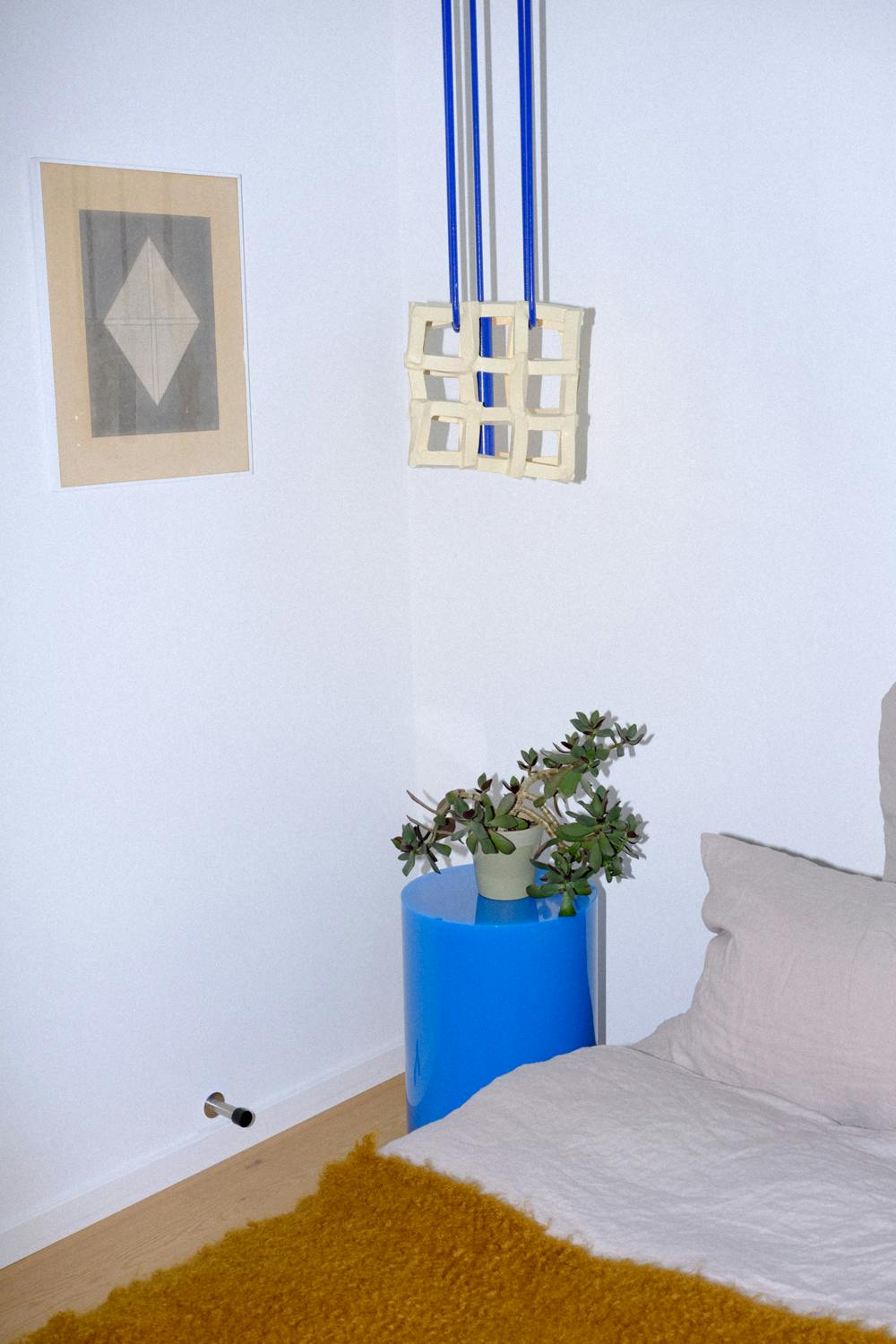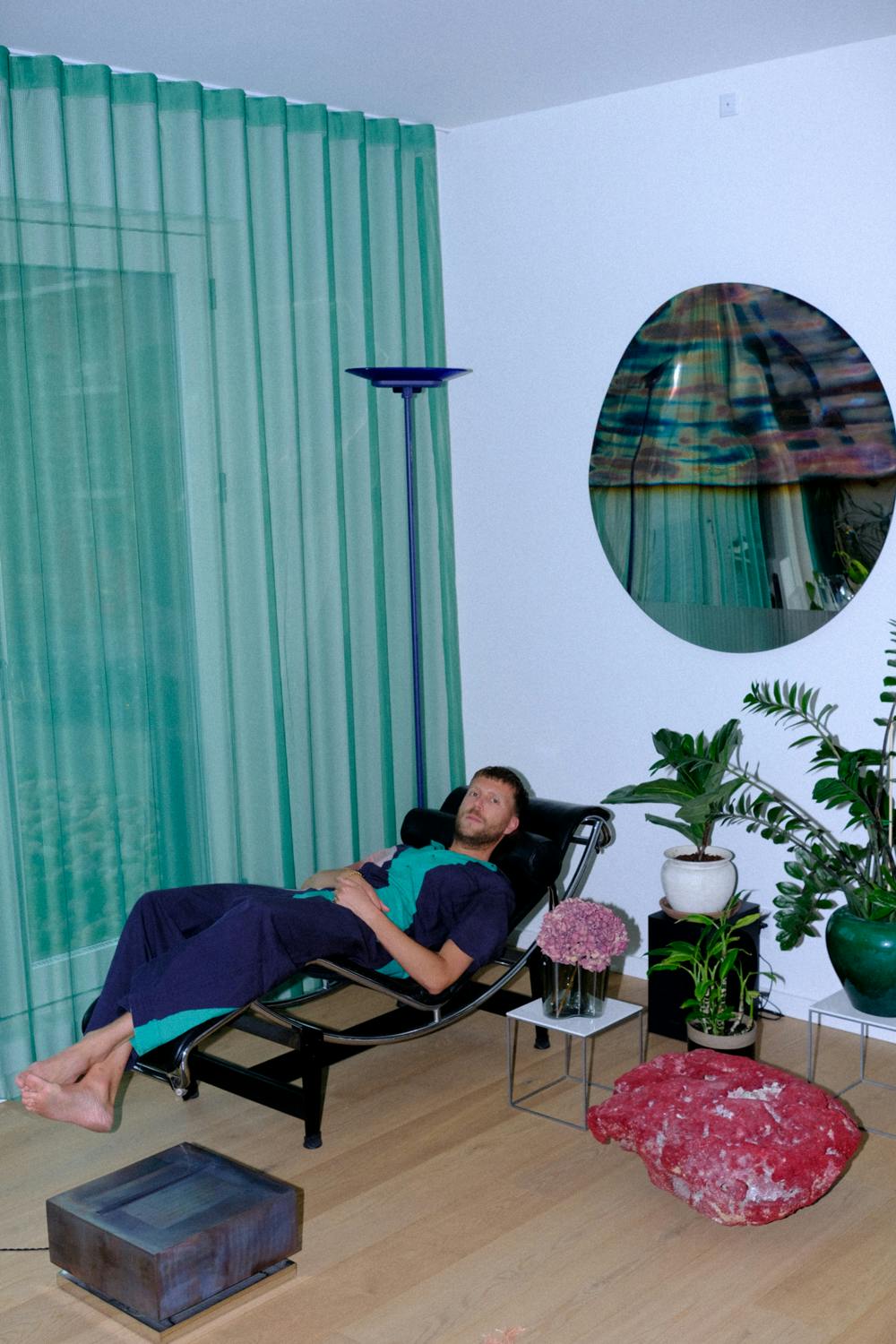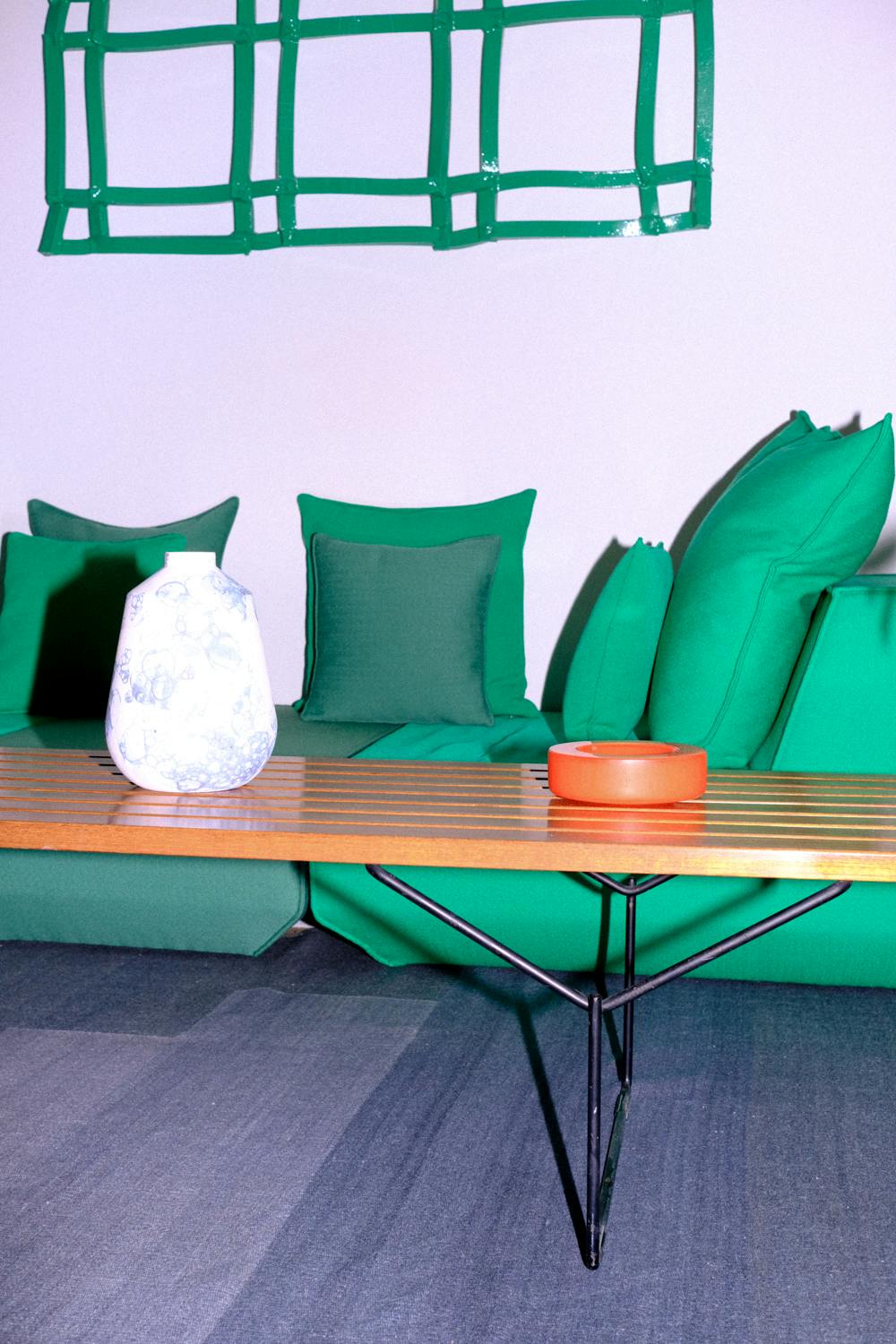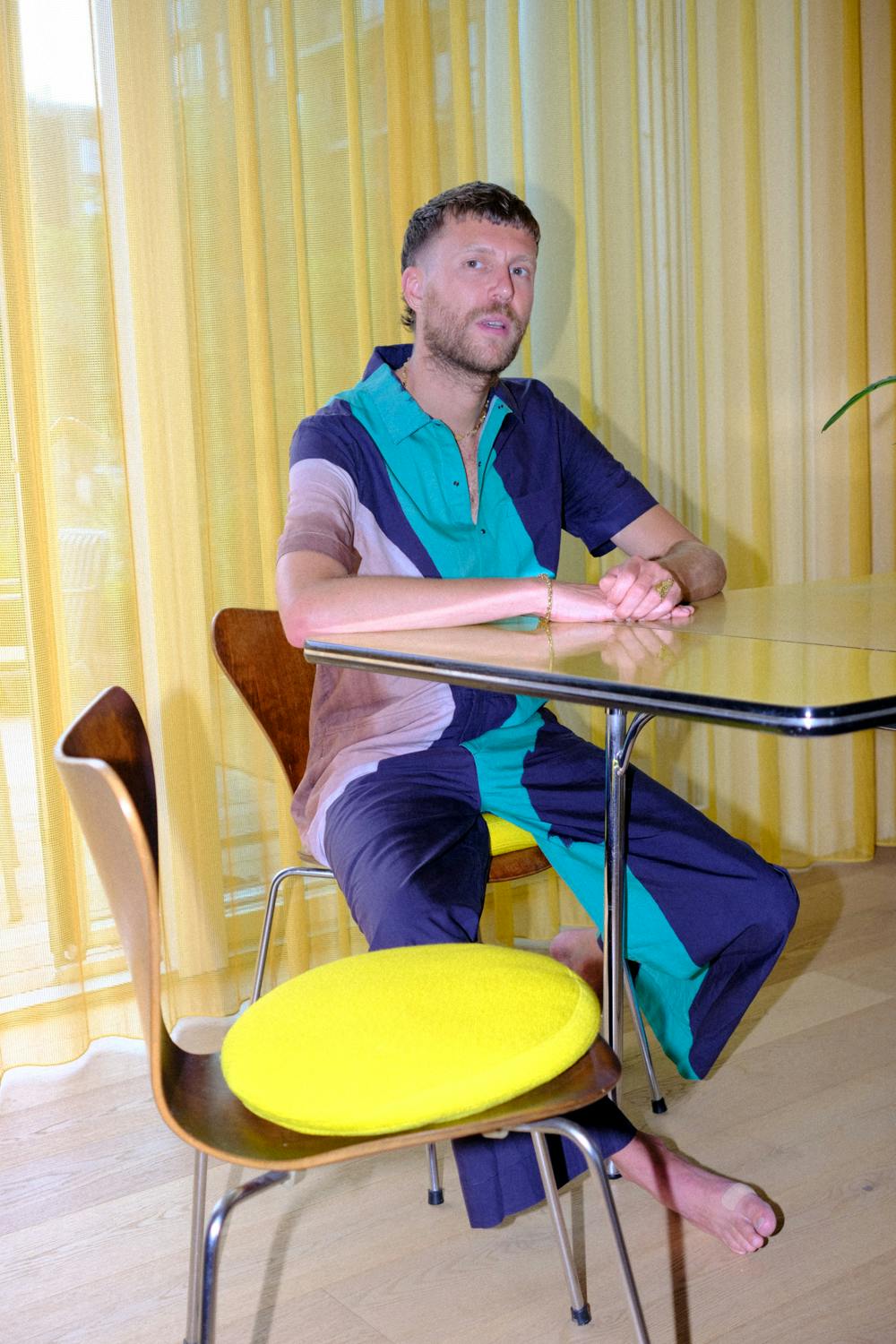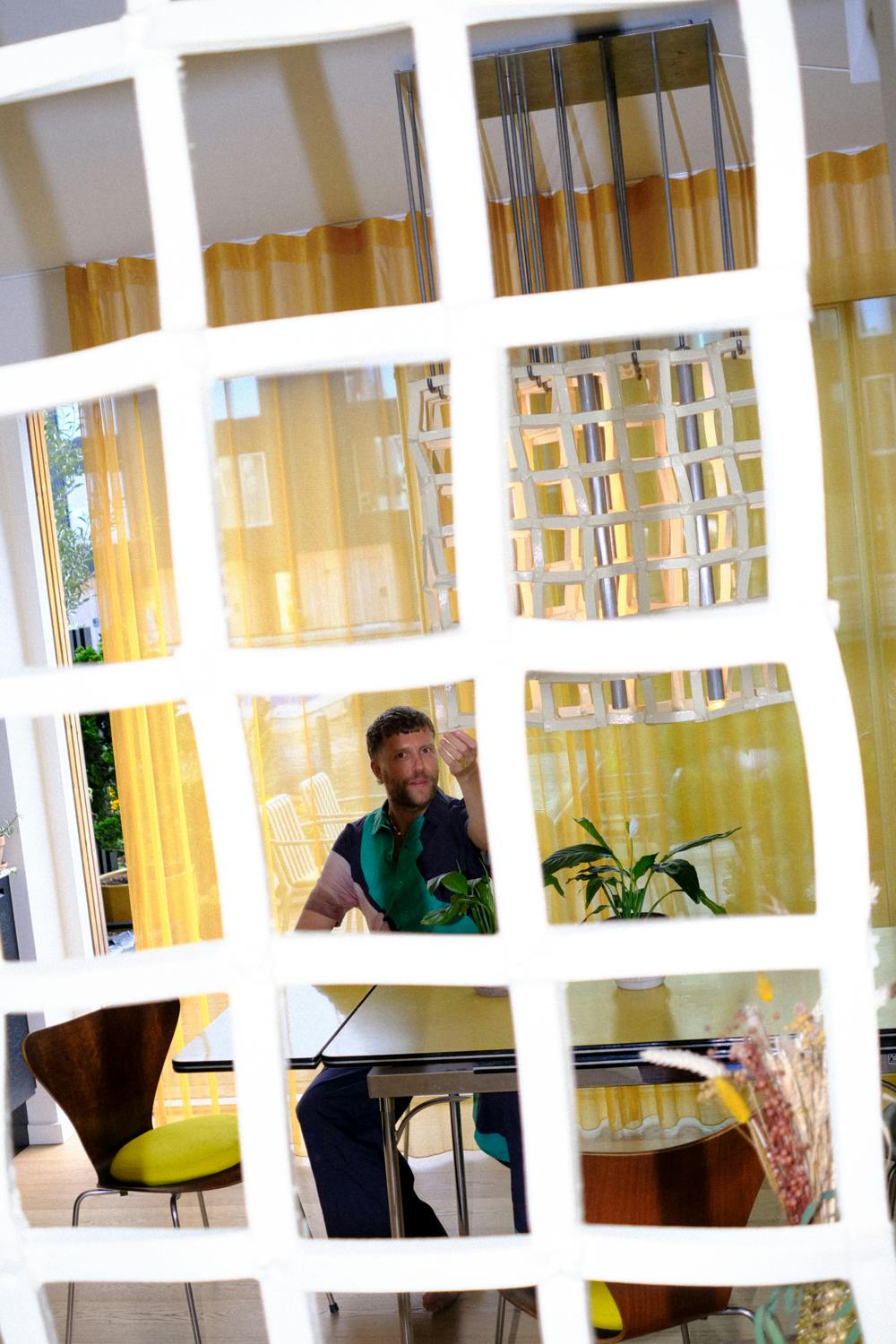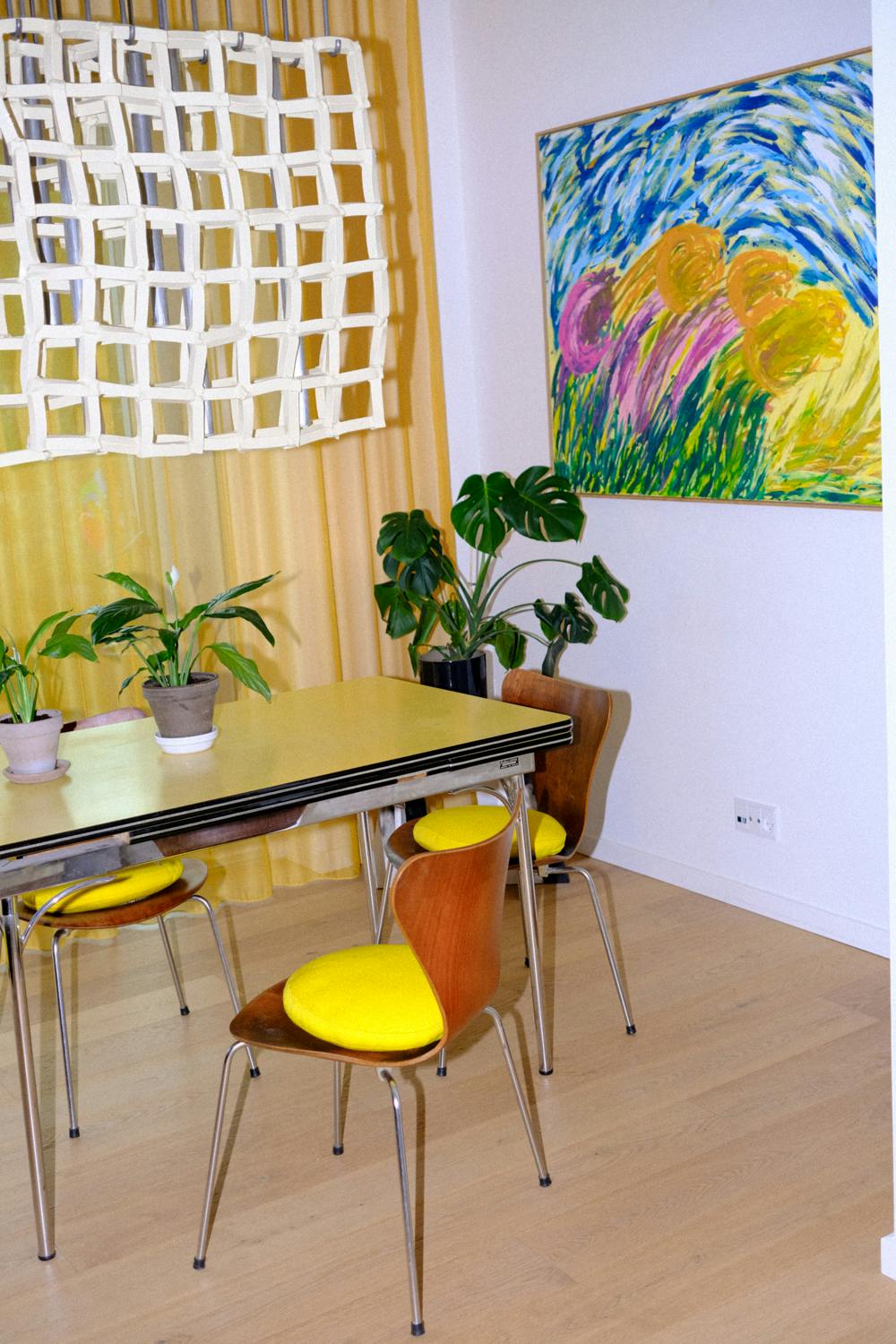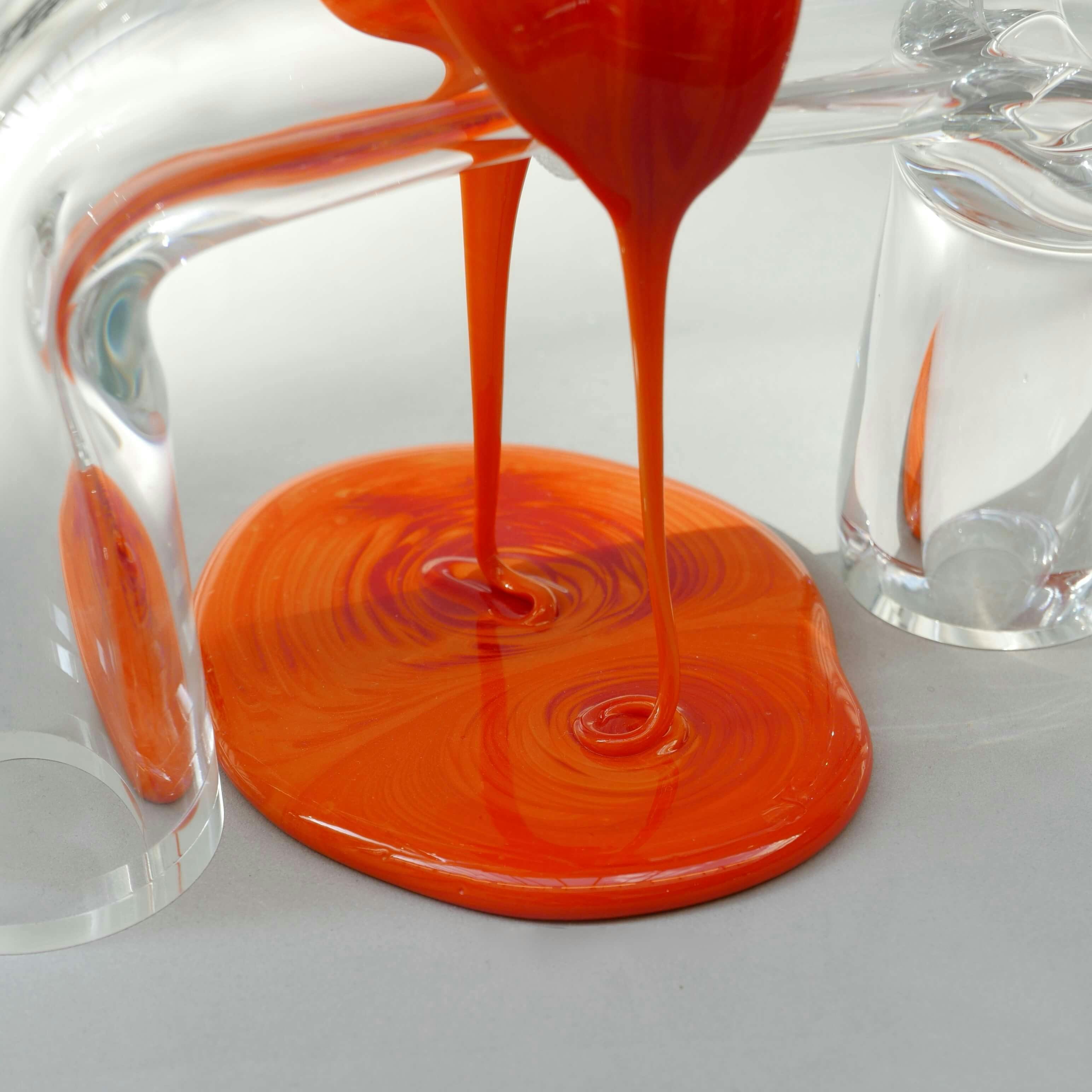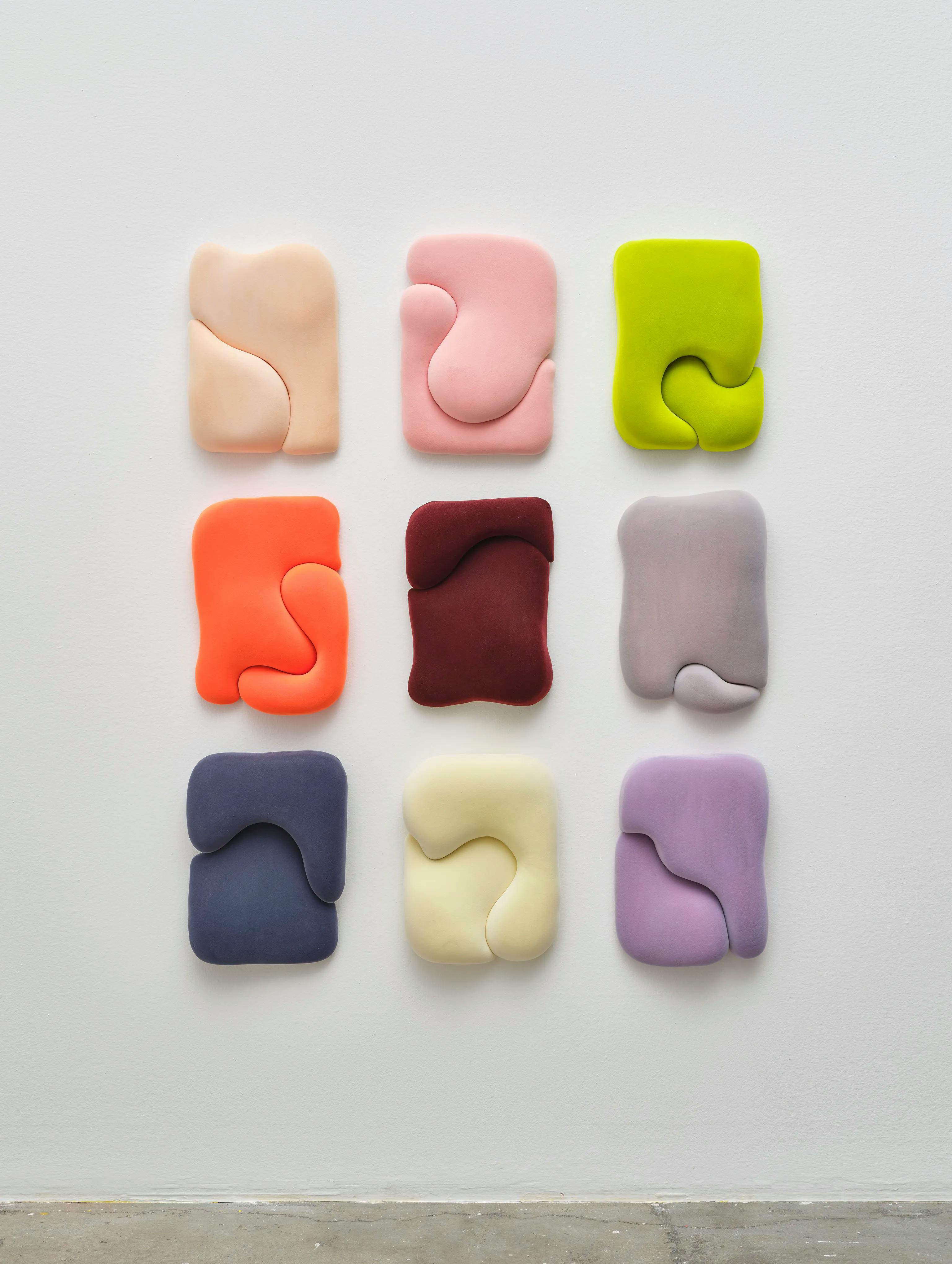
Home Visit with Anton Hendrik Denys
We visit the Copenhagen, Denmark, home of Interior and Furniture Designer Anton Hendrik Denys
Navigating the world through bold colour palettes inspired by mid-century interiors and material experimentation, Belgian-born, Denmark-based designer Anton Henrik Denys approaches space intuitively. His design philosophy stems from the idea of holistically creating spaces which are not narrative-driven but approached in a visceral way to create contemporary environments which are human-centred. Through colour, texture, material and light, he is interested in creating spaces that speak to human emotion and comfort.
We visit his bayside Copenhagen home, which is designed in a series of monochromatic rooms which evoke different atmospheres juxtaposed against the raw Danish seascape. We chat, navigating between developing functional art through material experimentation, trial and error, and how that can open up new possibilities and design avenues, the influence of his grandmother's modernist villa, which bred his sensitivity for design and space.
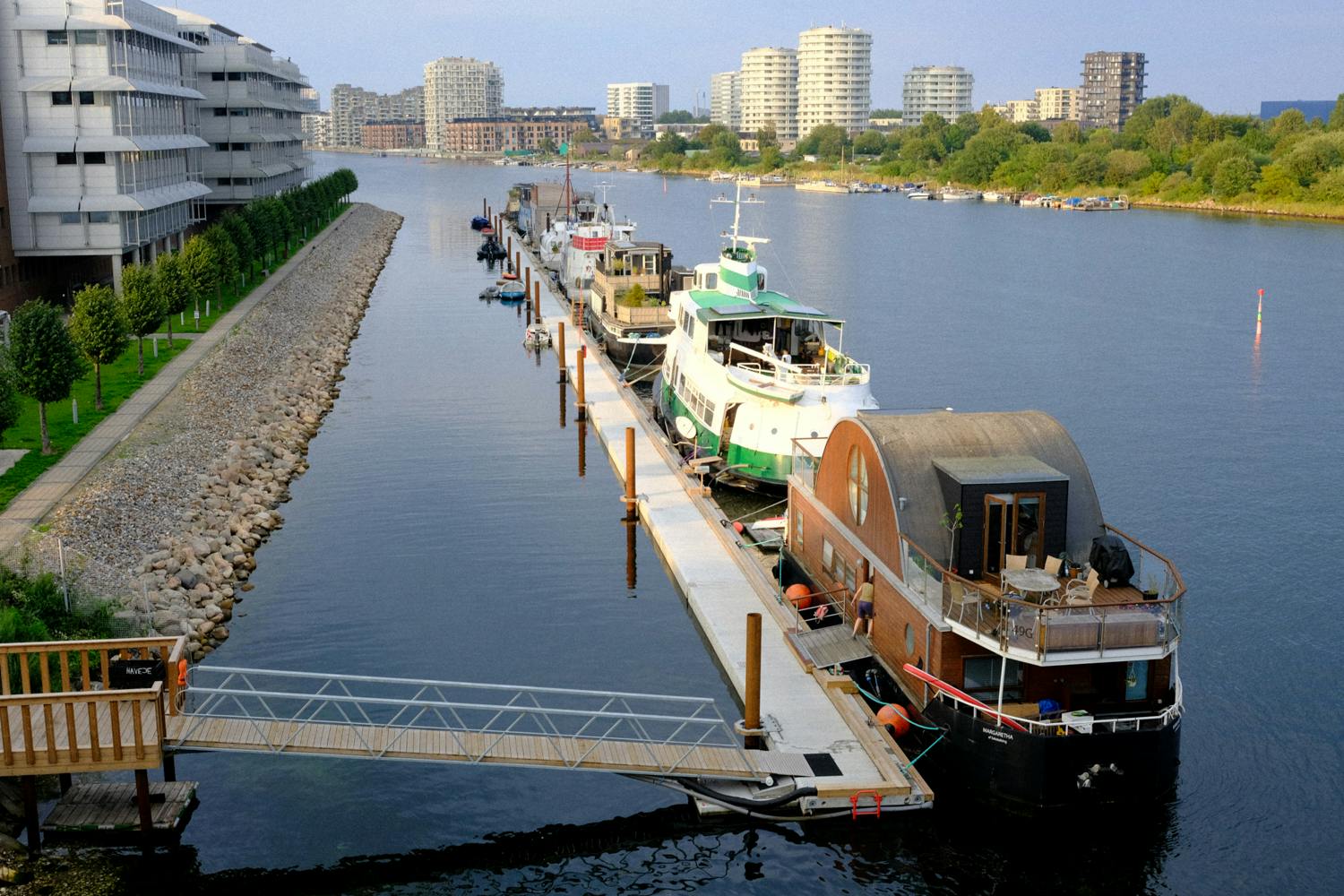

Kristen_ Can you tell us a little bit about yourself, your practice and what you do?
Anton_ I’m a Belgian designer who moved to the Danish capital four years ago, right before the start of the pandemic. From there, I have been running a small design studio, in which the main focus was on collectible design pieces that were created in limited editions for galleries and private collectors. But I also love to combine this with working on interior decorating projects.
You studied architecture and then tried two different programs at the Design Academy Eindhoven. How do you think that education at the DAE impacted your way of approaching design?
It puts the emphasis very much on the importance of experimenting and letting your design be driven by the experiment without knowing the outcome beforehand. In my architecture studies, I always learned to design with a very specific outcome and program in mind, so I had a hard time at the DAE at first, learning to let go of that mindset and adapting myself to this new way of working. It paid off in the end, however, and I’m happy I discovered their program.
I was able to skip the first year because of my prior studies. But that also came with a disadvantage, since the students get a taste of each department in the first year and learn how to use all the different workshops. Because I didn’t get that introduction, it took me some time at first to find out which design department I’d feel most at home in. In the end, I picked the Identity department - which no longer exists - where the main focus was on material, both for the interior design and fashion industry. That mix of both worlds was interesting to me but also a challenge at times.
Right after graduation, you had your first opportunity to show with one of the biggest design galleries in the world, Carpenter’s Workshop Gallery, in a group show curated by Li EDELKOORT. How did that affect your career? Your confidence?
It mostly forced me to fine-tune my production model rapidly. I had to understand the world of high-end galleries and their requirements, which was, of course, different than in school, where there was still room for mistakes and improvements…
It pushed me to continue my search for the best manufacturers, techniques and machines, finding out also which tasks are best executed by people and which ones give better results when done by machines. Machines are often the cheaper option, but some things are so much better executed when done by hand that I think it’s worth the time and the investment.
In the beginning, I think I wasn’t very confident enough, and I had no prior notion of how galleries worked. Then, starting to work with top galleries set some sort of precedent that turned out to be unrealistic compared to how smaller, lesser-known galleries work. I learned a lot in that process, though and now I think, if anything, my approach is at least much more composed. I know what I’m doing, and I know which pieces to make in which way and by which manufacturer. I worked with a lot of different people over the years, and now they all have their own specialities. So, depending on the project, one piece would be made in Belgium, and another can be done in Denmark, for instance. I like that flexibility.
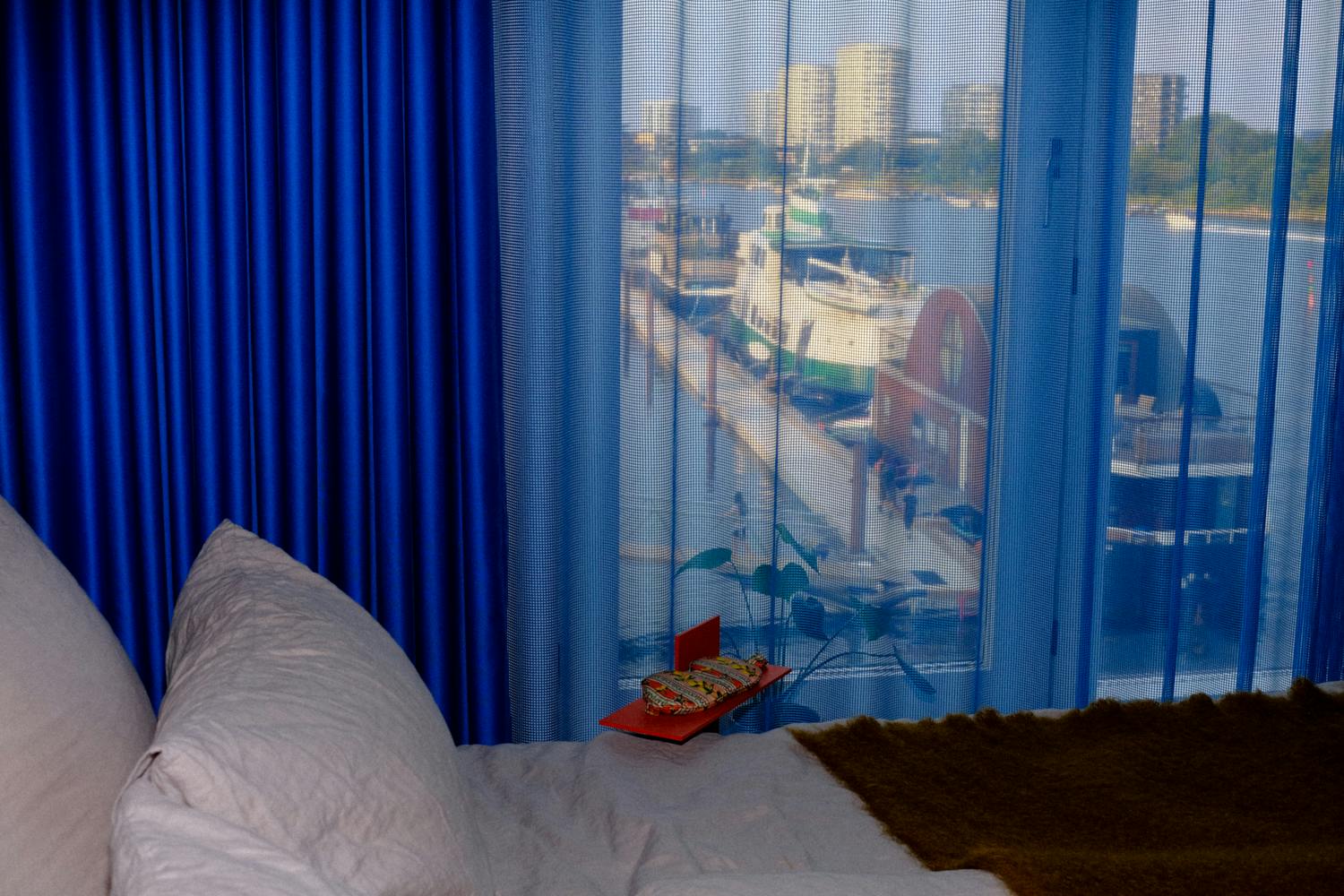
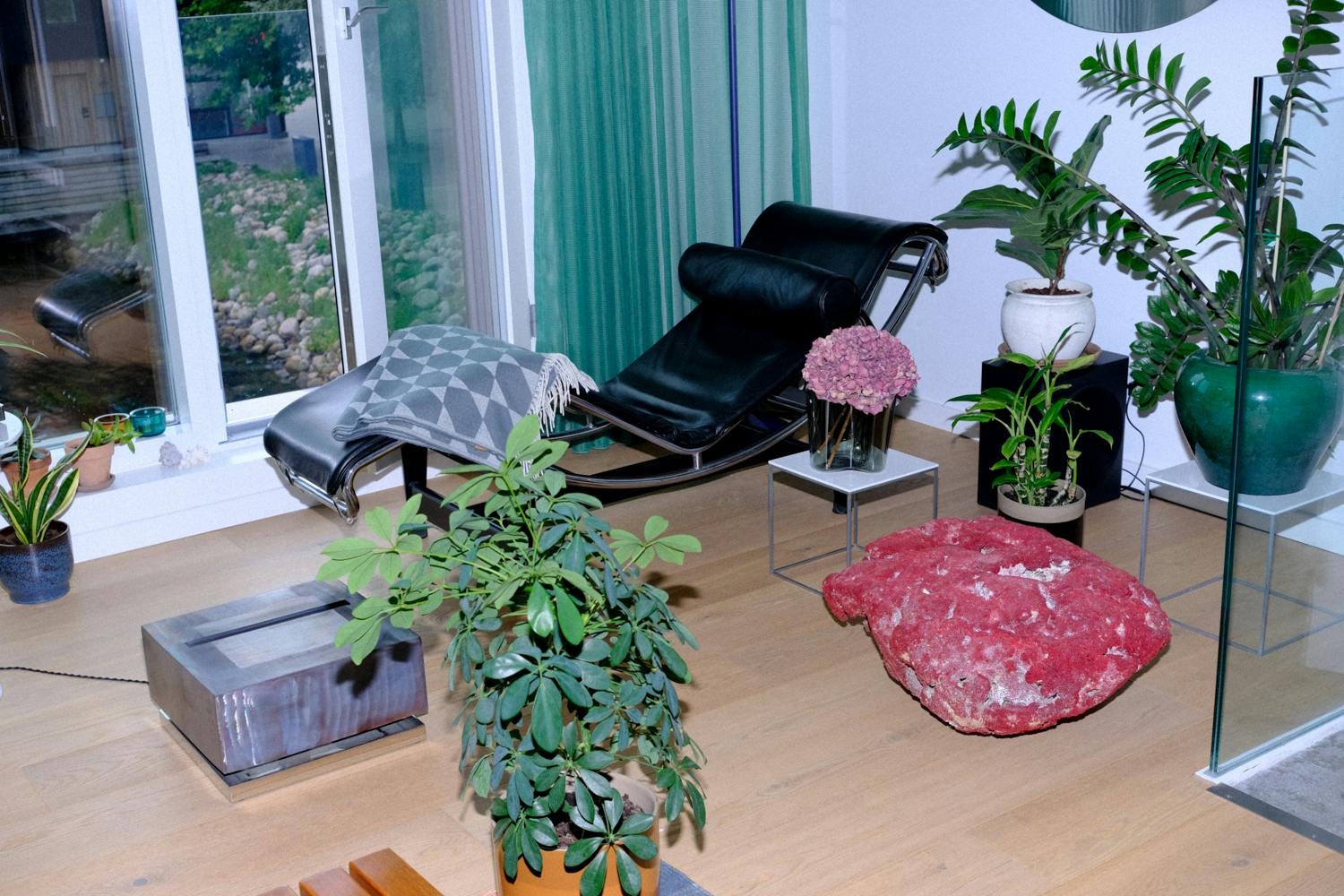
Did you feel like you were ready for it so young?
Not really, but mostly since I felt like my objects were not up to the level that these galleries required. Also, I had no idea what I was getting myself into. On the other hand, it was good that it happened so fast because I’m not sure I would have started my own design studio if it hadn’t. The fact that it was a bigger gallery was perhaps also a bigger motivator at that time.
Starting my studio was the last thing I wanted to do at the time. But things obviously turned out differently…, which is a good thing ☺.
You interned for the famed Bureau Betak – this must have been a hell of a learning curve and school in and of itself. How did this prepare you for your present-day career?
My internship at Betak was a lot of fun. And it flew by so quickly. I was only there for 4,5 months. And it was such a good eye-opener to see that you are able to work on large-scale design projects with short delivery times. Everything moved so fast over there. Perhaps a bit too fast for my taste. I also had the pleasure of simultaneously working on a private interior project with Alexandre, the founder of Bureau Betak, which definitely sparked my interest in interior design a lot more. And also showed me that as a creative person, you don’t have to box yourself in. Alexandre is a self-thought producer and set-designer, but he also designs so many other things, including his own homes, etc., combining all those trades at the same time, with perhaps a much more interesting point of view than someone who’s more strictly bound by their educational background. I loved his approach, and it really affected my way of tackling projects afterwards.
You also moved to the States for a year or two. How did the experience of working there influence your career path or approach to starting your own practice?
My first time in the States was for that internship at Betak. Because of that, I got such a hunger to go back to the States right after my graduation. I loved the energy New York had, and at that time, I was convinced it was the only place where I could be creative in a professional setting while also earning a living.
I was there on an intern visa, and I almost didn’t want to go home at first. But that would have meant not graduating, which wasn’t an option. So, I went back, graduated and went back to New York as soon as possible after that to try to find a job.
Eventually, things turned out differently, and I ended up doing a few more internships, both in New York and Los Angeles, where the focus lay mostly on interior design.
When I got the opportunity to be part of that exhibition curated by Lidewij, I decided it was time to return to Europe because that’s where my production was located. I had still kept that going a bit while I was doing these internships, albeit on a back burner.
Also, at that same time, I got to do my first renovation project (of an office building in Belgium), which I got through my own network, which seemed too good of an opportunity to turn down.


Your practice deals a lot with experimentation with materials. How do you approach experimenting with a new material, and when do you know when you have reached the result you are aiming for?
I still approach it with the same mindset as the assignments in DAE. There, we would always continue with experiments until one of our teachers told us, “I think enough is happening here.” This meant we could stop experimenting. I often try to ask myself that same question today with new projects – whether it’s an interior design project or a design piece – “Is there already enough going here?”. If I’m still missing something, I continue. But overdoing it is also often a risk that lurks around the corner. So it’s a thin balance if you ask me, very much based on gut feeling.
You are both an interior designer and a furniture designer; what is the red thread between your two practices?
I always aim for interesting combinations of colours and textures in both practices.
I love using materials that can be adapted in several ways and, in doing so, give the impression multiple materials have been used instead of just one.
I also love contrasts a lot. Rough finishes combined with very glossy surfaces… Very lightweight objects that look super heavy. For my foam pieces, for instance, I always make the hanging systems very heavy, so people are surprised once they touch these objects and find out how light they actually are.
Your grandmother was a huge collector of art and furniture and lived in a remarkable Modernist house in Belgium. How did growing up in that environment impact you? How did her passion and sensitivity to furniture and interiors influence your path later in life?
My grandmother has always been my biggest influence when it comes to everything I do professionally today. She spoon-fed me with a certain aesthetic sense that now comes in very handy.
Being able to spend so much time there, growing up in that house, had an impact on me from an early point in life. I was always there as a kid, making small architectural floor plans and discussing them with my grandmother, or she would give me design books and magazines she kept aside for me, thinking I would like them. My grandfather could also talk for hours about the origin of all the art and design pieces in their home. He always loved to take people on a tour of the house. And I loved taking that tour over and over again. He also loved to show me all the old drawings their architect made and all the scale models, all drawn and made by hand since it was designed in the sixties.
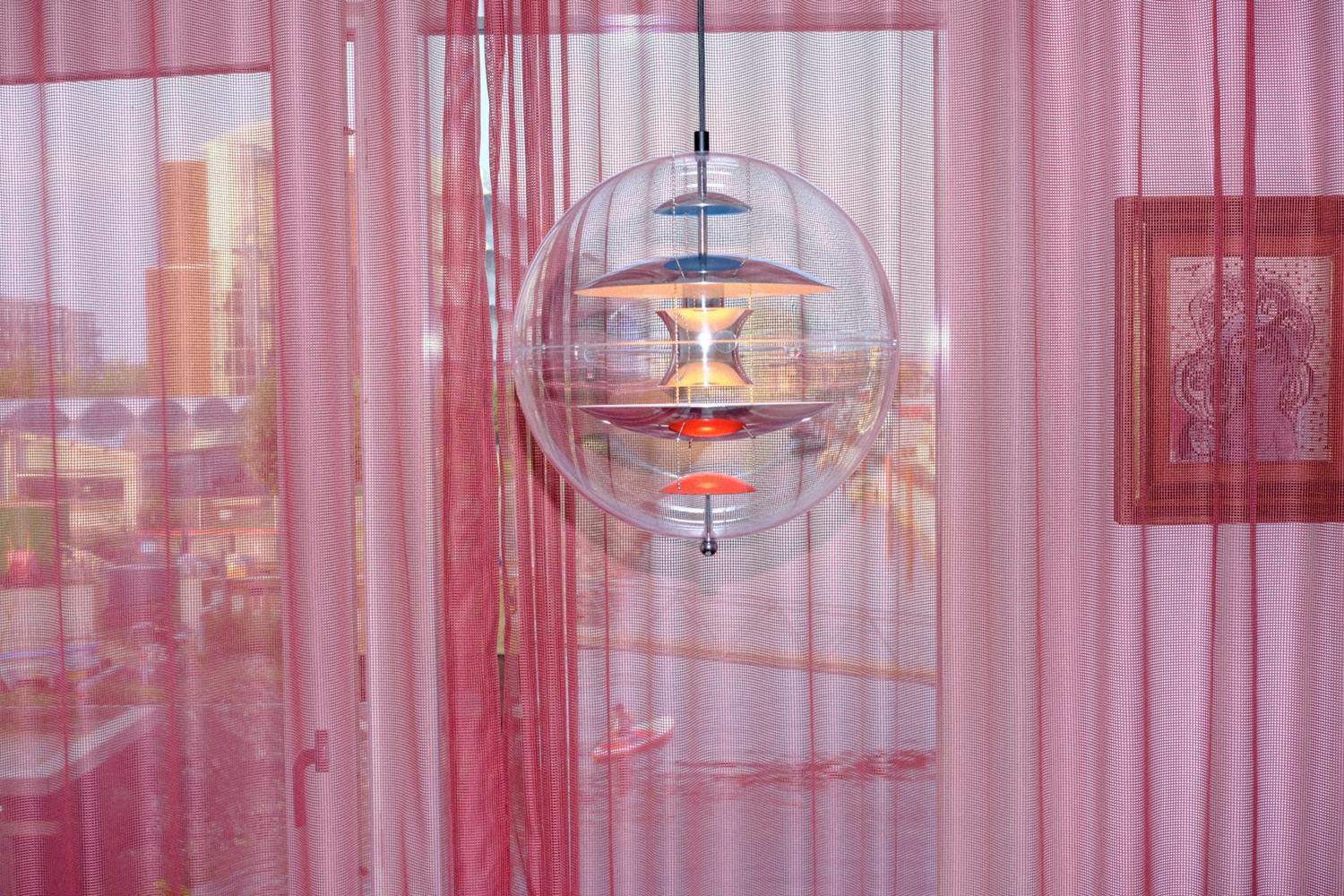
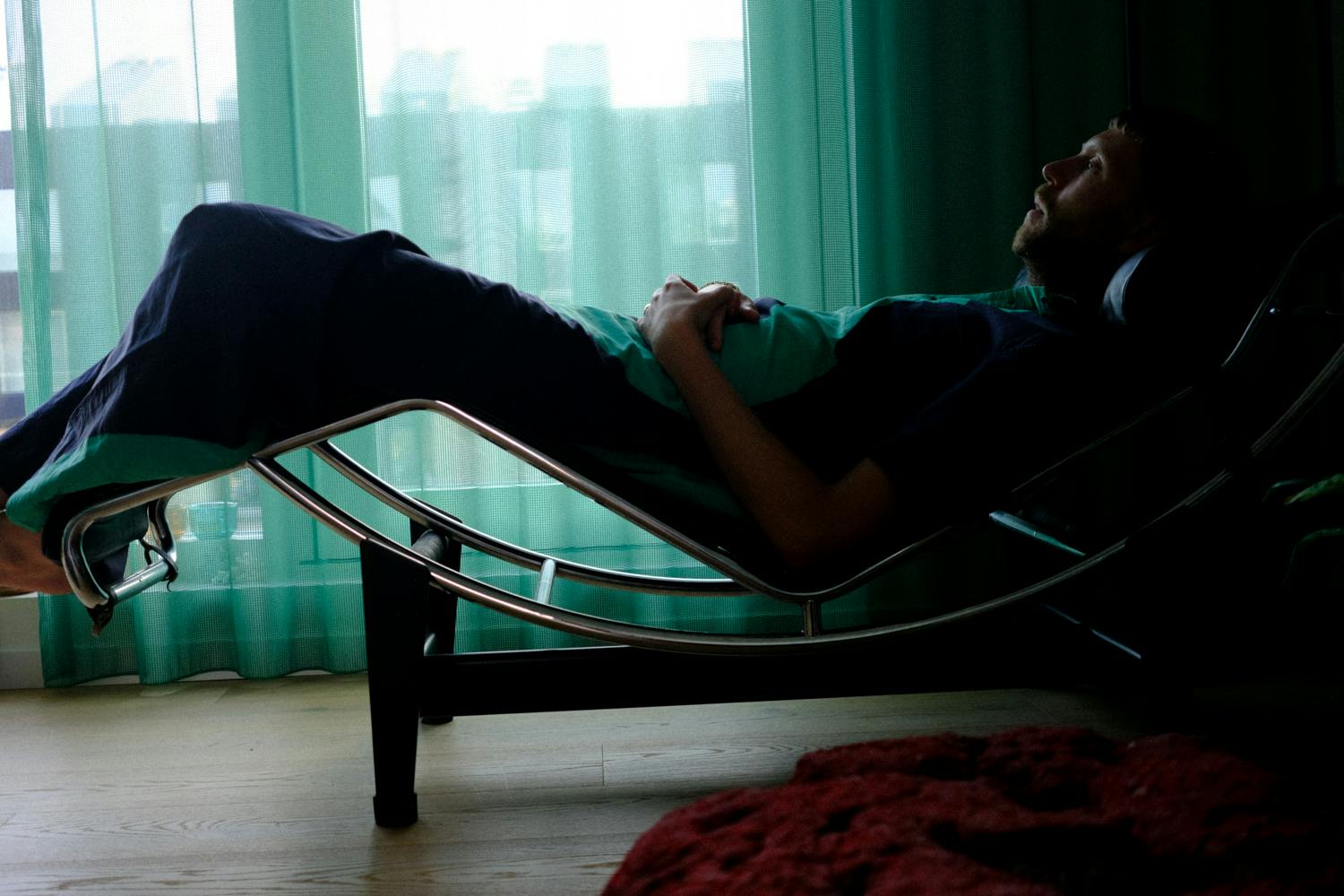
What was your favourite piece in her house, and why did it impact you?
There were so many, so it’s very difficult to pick one. Two objects really inspired me a lot, one being a large golden ring my grandmother would always wear, no matter the occasion. But they also had a marble “globe” on the coffee table in the living room, and the pattern and colours of this marble resembled what Earth must have looked like from space. It always sparked my imagination so much. However, the most monumental piece of their home was perhaps their staircase, which was very big and round, demanding a lot of space, at the centre of the room. And it was completely covered in a very fluffy carpet. As kids, this was our favourite spot to play… Later on, I got to use it as a backdrop during a photoshoot.
Your interiors and work seem to draw from mid-century modern colour palettes; why do you gravitate towards these colour palettes?
That also goes back to my grandparents' house. I grew up being so inspired by the designs of the sixties and seventies. Also, the fashion of that time, from looking at old pictures of my grandmother. My grandfather took pictures nonstop, so we now have a very large collection to look back on, which is so wonderful.
The colour scheme of their house was rather neutral, but it would have those pop elements you’d see in series like Mad Men, for example. My favourite example was that their curtains would be in gradient colours, going from bright orange to yellow and green. This was especially wonderful when the light hit them.
In general, I love that the use of colour seemed much more common in midcentury design and I try to bring that approach to my practice. The fact that I then often go back to those colours is perhaps more of an homage to that period. And in a way perhaps also an homage to my grandmother.
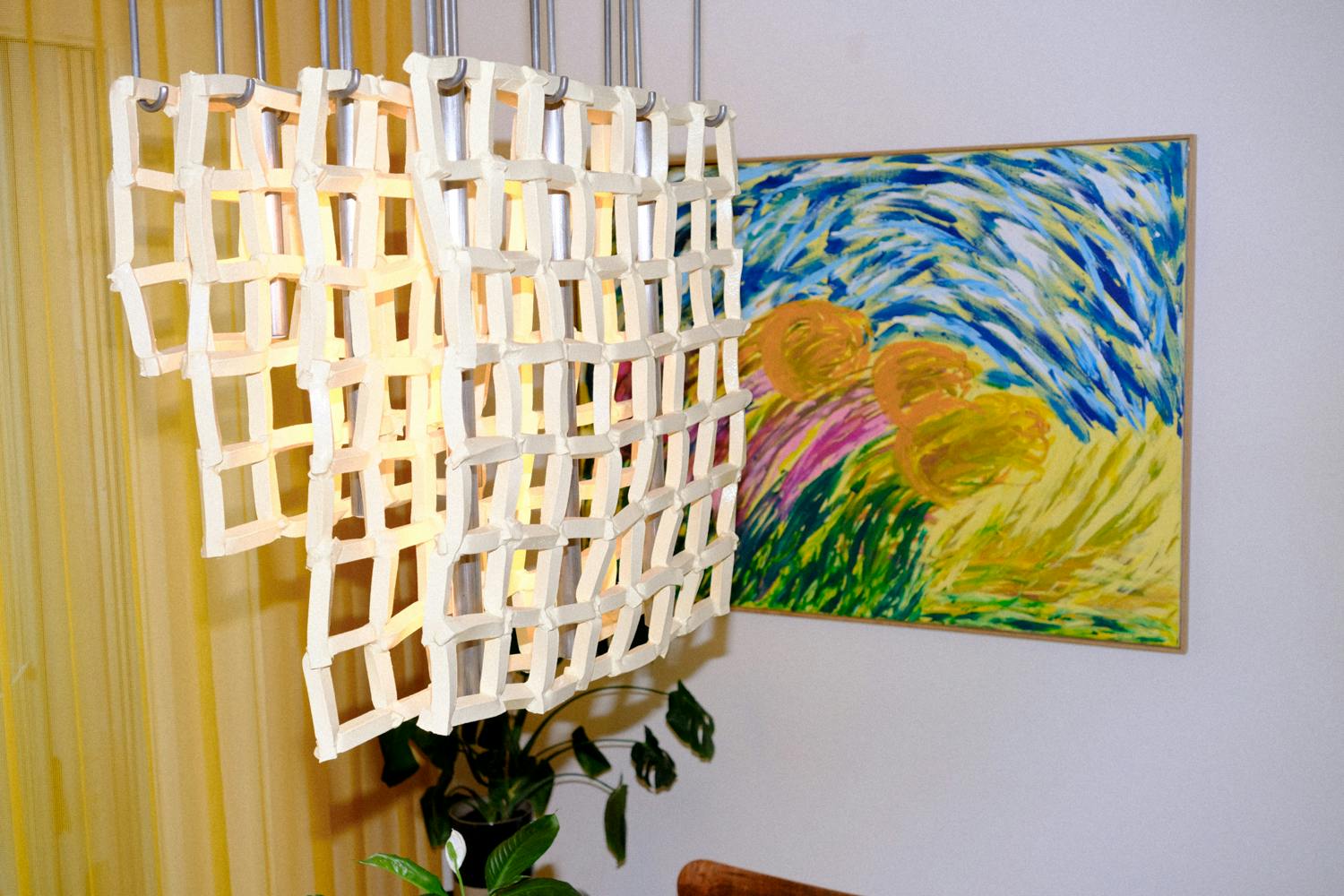

Your home has each room divided by a different central colour. A lot of designers are afraid to work with bright colours; how do you feel colour can create a more comfortable environment than “safe” neutrals?
It seems nowadays that people have become less afraid of colours, which is a very good thing. Because colour adds so much extra character to a space, especially on grey, gloomy days, it’s such a gift not to have to spend your time in a white, neutral-coloured box.
I love using curtains for the main pop colour because you can always play around with those. You can open or close them; you can pick a fabric that’s semi-translucent. On sunny days, your curtain will function as a filter and also give the rest of your space a nice hue. It’s a trick I also picked up at my grandparents’ place. For me, this was also a good way to convince my partner to use a lot of colour in our home, which he initially was a bit hesitant to do. A coloured curtain will always seem a less drastic option compared to a fully painted wall or ceiling.
I am still a fan of white walls, though, because they always serve as the perfect background for very colourful pieces.
What is your dream project for 2024?
This may not be that original. But my ultimate dream project would be to get to an architectural project, where I can be in charge of the total design, up to the smallest details. And also make all, or most of, the furniture pieces from scratch, completely informed by the client’s own wishes… Be it a boutique hotel or a holiday home… you name it. ☺
